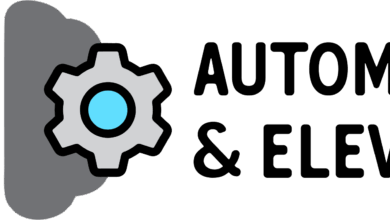The topic of improving your profit margins is very important. We tend to only think about it when creating a budget and at the end of the year, but never pause to make changes during the year when it can help our profits the most. So far this year, we have changed several aspects of our business — from creating positions, training, pricing, new fees, and more.
Hiring
 Over the past couple of months, as our company grew or new issues occurred, we were locked in on only hiring for the same redundant positions over and over, thinking that they were the only answer to keeping up with growth. Our design department has doubled from four to eight designers since last year, which comes with different concerns at a much larger level. So, my wife came up with a great idea of training a quality control person from within to proof what each designer is doing. Then, the quality control team member would also make sure the designers have all artwork files and info needed to work on new designs for customers. Having one person focus on quality control full time has dropped the wasted downtime of production. This helps us lower the replacement errors internally and cuts down unnecessary designer overtime. The quality control person is essentially an editor for us. This is a win all the way around.
Over the past couple of months, as our company grew or new issues occurred, we were locked in on only hiring for the same redundant positions over and over, thinking that they were the only answer to keeping up with growth. Our design department has doubled from four to eight designers since last year, which comes with different concerns at a much larger level. So, my wife came up with a great idea of training a quality control person from within to proof what each designer is doing. Then, the quality control team member would also make sure the designers have all artwork files and info needed to work on new designs for customers. Having one person focus on quality control full time has dropped the wasted downtime of production. This helps us lower the replacement errors internally and cuts down unnecessary designer overtime. The quality control person is essentially an editor for us. This is a win all the way around.
Training
 Many companies only focus on training staff for one position. Over the years, we not only did that, but we trained staff on helping to do quality control work as well. Only locking your staff into learning one skill at your company can cause many issues. It also makes it harder for anyone to take time off. Eventually, the job may become boring to them. And if you don’t have a lot of work in their department, they do not have much to do that day, which is a loss for both of you. We sat down with our entire team, from all production departments, and asked them how they felt about everyone learning each other’s jobs and they were excited about it. They get to constantly learn new things and when larger orders or rush orders come in, it allows the work load to be broken down into smaller chunks per person to make it easier on the entire team. Yes, this can make your company more profitable, but with that extra profit you should be sure to reward the team for learning all of the new skill sets. Cross-training your crew this way will also help to cut down on overtime. We teach our crew to get 45 hours’ worth of work out in 40 hours, so it makes it easier for us to give larger pay increases year to year.
Many companies only focus on training staff for one position. Over the years, we not only did that, but we trained staff on helping to do quality control work as well. Only locking your staff into learning one skill at your company can cause many issues. It also makes it harder for anyone to take time off. Eventually, the job may become boring to them. And if you don’t have a lot of work in their department, they do not have much to do that day, which is a loss for both of you. We sat down with our entire team, from all production departments, and asked them how they felt about everyone learning each other’s jobs and they were excited about it. They get to constantly learn new things and when larger orders or rush orders come in, it allows the work load to be broken down into smaller chunks per person to make it easier on the entire team. Yes, this can make your company more profitable, but with that extra profit you should be sure to reward the team for learning all of the new skill sets. Cross-training your crew this way will also help to cut down on overtime. We teach our crew to get 45 hours’ worth of work out in 40 hours, so it makes it easier for us to give larger pay increases year to year.
Pricing
 We’ve held the same pricing structure over the past five years in order to gain market share. Since we typically grow by no less than 15% each year, it was much easier to absorb the cost of various increases. As this is getting more difficult to do, my wife and I combed through our pricing grids and increased pricing across the board for all processes. Many supplies have gone up 50% to 100% over the past two to three years alone. Our customers have not complained at all since they also know we offer full benefits to all of our teammembers. Our customers were not only understanding, but very thankful. Most of our pricing did not go up more than 5% to 10% more which equals 50 cents to $1 more as we can spread the cost increase across the volume of orders we do throughout the year.
We’ve held the same pricing structure over the past five years in order to gain market share. Since we typically grow by no less than 15% each year, it was much easier to absorb the cost of various increases. As this is getting more difficult to do, my wife and I combed through our pricing grids and increased pricing across the board for all processes. Many supplies have gone up 50% to 100% over the past two to three years alone. Our customers have not complained at all since they also know we offer full benefits to all of our teammembers. Our customers were not only understanding, but very thankful. Most of our pricing did not go up more than 5% to 10% more which equals 50 cents to $1 more as we can spread the cost increase across the volume of orders we do throughout the year.
We have also noticed rush orders trending more and more. Years ago, we used to charge rush fees. My wife came up with the idea to waive them years back to gain more market share and growth. Now that we have a lot of yearly sales and rush orders coming in daily, we are now implementing rush fees again. This can increase the cost per unit by 5% to 30% depending on how fast the customer needs the order. Over the past 12 months, overtime alone cost us $50,000. Implementing rush order fees will help absorb that cost and will prevent our company from losing any profit trying to help get the order done on time. It will also train customers to prepare for next time versus waiting, which is a win for both of us in the end, and our team gains more income this way through the overtime.
Supplies
 Another major fix that has helped our company has been investing into stock for supplies and products per department. For several of our processes, we order weekly supplies. For some other supplies, we order in bulk by the quarter or for the year, which helps us save 5% to 10% up front, and then on the back end, it helps production stay on point or ahead on order, which then allows us to take on more rush orders. Doing this also allows our company to turn a profit faster on both ends. Learning what your buying habits are and expanding on them by using your analytics helps you do more with your money than you realize.
Another major fix that has helped our company has been investing into stock for supplies and products per department. For several of our processes, we order weekly supplies. For some other supplies, we order in bulk by the quarter or for the year, which helps us save 5% to 10% up front, and then on the back end, it helps production stay on point or ahead on order, which then allows us to take on more rush orders. Doing this also allows our company to turn a profit faster on both ends. Learning what your buying habits are and expanding on them by using your analytics helps you do more with your money than you realize.
Remember, showing a profit looks good for the banks, but you end up paying taxes on it, so you want a healthy cash flow and to invest in supplies and stock that makes your company more profitable year after year and reduces what you have to pay each year in taxes. Focus on improving your profit all year long!




